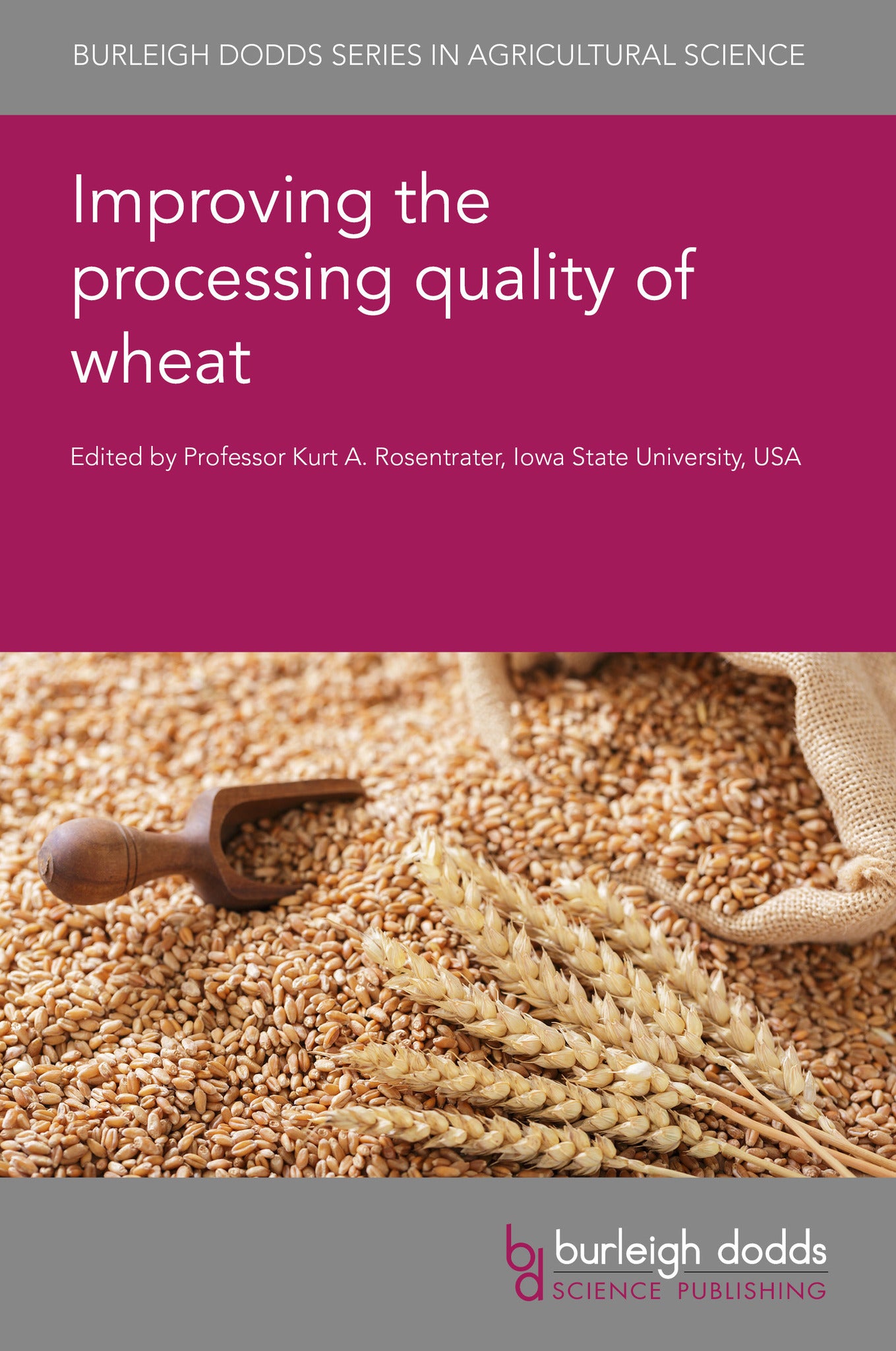We're sorry. An error has occurred
Please cancel or retry.
Improving the processing quality of wheat

Wheat is the most widely cultivated crop in the world and plays a crucial role in feeding a growing population. For example, wheat grains and flour are staple ingredients in a range of processed products such as bread, pasta and pastry which are consumed by millions on a daily basis. However, as consumer expectations on product quality continue to rise, farmers face even more pressure from food manufacturers to ensure that grain quality is optimised from cultivation through to harvest.
Improving the processing quality of wheat provides a comprehensive overview of the key components that can affect the processing and sensory quality of wheat, such as the composition and concentration of proteins, lipids and non-starch polysaccharides. The book also reviews the range of analytical techniques used to measure wheat quality characteristics, including high-performance liquid chromatography and near-infrared reflectance, as well as recent developments in ensuring the safety of wheat products.

TECHNOLOGY & ENGINEERING / Agriculture / Agronomy / Crop Science, Agronomy and crop production, TECHNOLOGY & ENGINEERING / Agriculture / Sustainable Agriculture, Sustainable agriculture, Agricultural science

Part 1 Components of wheat quality
- 1.Understanding and optimising protein composition and concentration in wheat: glutenin and gliadin: Hulya Dogan, Kansas State University, USA;
- 2.Understanding and optimising non-starch polysaccharide composition and concentration in wheat: Luc Saulnier, INRAE, France;
Part 2 Analytical techniques
- 3.Advances in wheat variety identification: Lei Zhou, University College London, UK;
- 4.Advances in analysing wheat chemistry: Katharina Scherf, Technical University of Munich, Germany;
- 5.Advances in understanding, measuring and optimising wheat grain quality: Carlos Campabadal, Kansas State University, USA;
- 6.Advances in understanding, measuring and optimising wheat grain milling performance: Suresh Sakhare, Central Food Technological Research Institute (CFTRI), India;
- 7.Advances in understanding, measuring and optimising wheat flour quality: Gamze Yazar, University of Idaho, USA;
Part 3 Improving the processing quality of wheat for different products
- 8.Advances in understanding and optimising wheat processing quality: (pan) bread-making: Samson A. Oyeyinka, University of Lincoln, UK;
- 9.Advances in understanding and optimising wheat processing quality: flat breads: Mahsa Majzoobi, RMIT University, Australia;
- 10.Advances in understanding and optimising wheat processing quality: cookie and cracker manufacture: Elisa Karkle, Kansas State University, USA;
- 11.Advances in understanding and optimising wheat processing quality: cake and pastry-making: Caroline Joy Steel, State University of Campinas, Brazil;
- 12.Advances in understanding and optimising wheat processing quality: fermentation for beer, whiskey and biofuels: Sinead Morris, Institute of Technology Carlow, Ireland;
- 13.Advances in understanding and optimising wet milling of wheat: Kaliramesh Siliveru, Kansas State University, USA;
Part 4 Ensuring safety
- 14.Advances in understanding mycotoxin occurrence and contamination of wheat: John Leslie, Kansas State University, USA;
- 15.Advances in detecting mycotoxin contamination of wheat: Joseph Opoku, USDA-ARS, USA;
- 16.Advances in preventing mycotoxin contamination of wheat: Antonio F. Logrieco, Institute of the Science of Food Production – National Research Council (CNR-ISPA), Italy;
- 17.Advances in understanding and reducing allergens in wheat: Sachin Rustgi, Clemson University, USA;
- 18.Advances in understanding and managing fermentable oligo-, di- and monosaccharides and polyols (FODMAPS) in wheat: Aleksandra Torbica, University of Nova Sad, Serbia;
- 19.Advances in understanding and reducing acrylamide in baked products: Marta Mesias, Instituto de Ciencia y Tecnología de Alimentos y Nutrición (ICTAN-CSIC), Spain;




